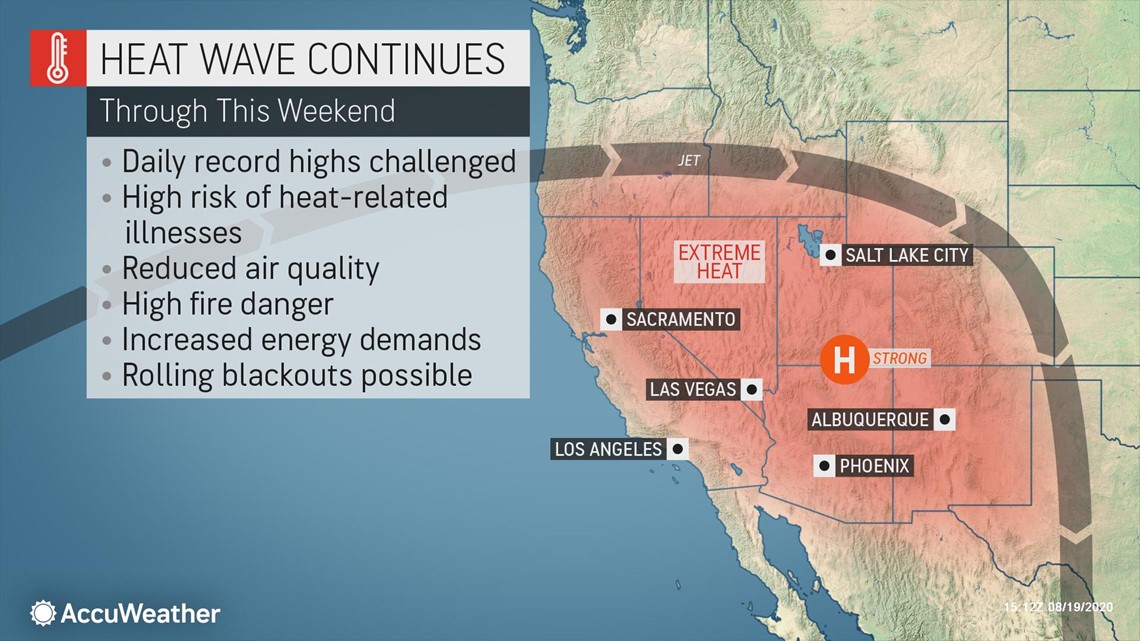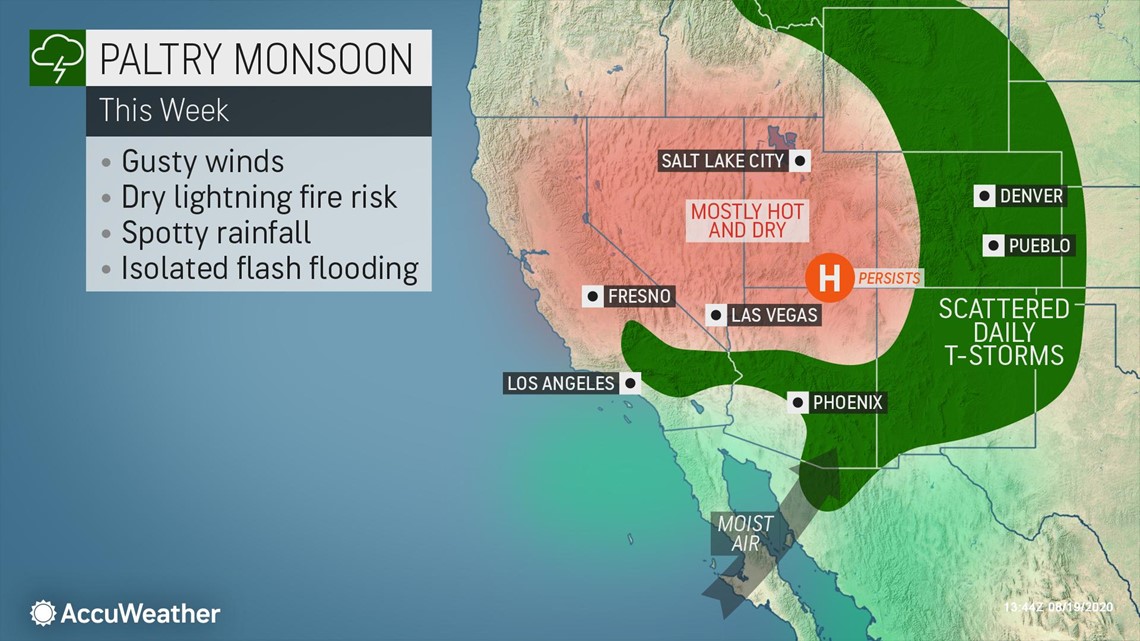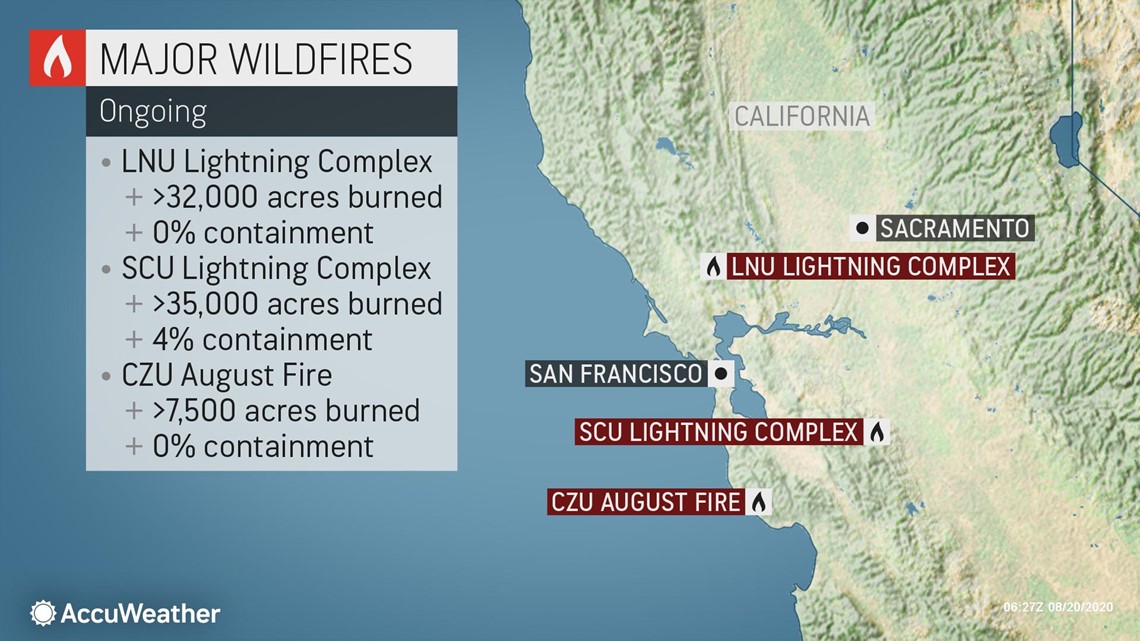High temperatures and dry weather have been ongoing for a prolonged stretch in much of the southwestern United States and unfortunately for the extremely busy firefighters in the region, forecasters say that is unlikely to change any time soon.
With high pressure in firm control over the Southwest, the pattern that has been in place for several days will continue for a while longer.


In addition to the heat and lack of rainfall, winds are an issue in some locations as well and are contributing to the high fire danger.
"An elevated fire threat will continue once again today across large swaths of the western U.S., with the greatest threat across the northern half of Nevada," said AccuWeather Senior Meteorologist Dan Pydynowski. "The combination of warm temperatures, dry conditions, low relative humidity and wind gusts around 30 mph later on Thursday will lead to a critical fire danger for communities in the northern half of the state, including Elko, Reno, Carlin and Winnemucca."
Around the periphery of the high pressure, spotty thunderstorms are likely each day, particularly during the afternoon hours. However, that may not necessarily be good news, since only some of the storms will bring rainfall.


"The possibility of thunderstorms across western and central Colorado along with much of Wyoming and Montana will also lead to an increased fire risk," Pydynowski said. "Unfortunately, these storms can do more harm than good with respect to starting fires as many of these thunderstorms will be dry thunderstorms or contain very little rainfall, so lightning sparking dried-out vegetation and causing fires will be of great concern."
Numerous fires are already burning in the West, especially in California. Some of the more notable fires in the Golden State are the LNU Lightning Complex, the SCU Lightning Complex and the CZU August Fire. The blazes in the West have led to many evacuations and poor air quality in much of the region.


"Anyone who is camping in these areas over the next several days should be aware of any local fire bans," Pydynowski said. "In places where campfires are allowed, people need to be sure to put out fires and embers," he cautioned.
This general pattern in the Southwest is likely to continue through at least the middle of next week and possibly beyond. That could lead to continued stress on power grids due to the heat, and it will be difficult for firefighters to gain the upper hand on blazes. In addition, new fires are likely as well.

